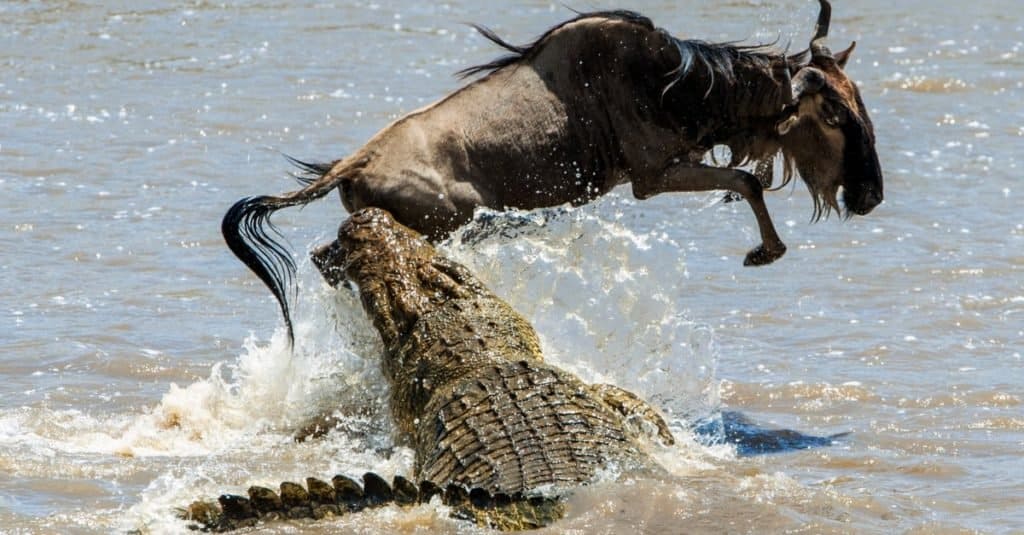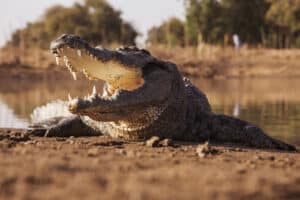What on earth was this pigeon thinking? Of all the places in this wildlife enclosure it could have settled, it chooses the reptile pen. Perhaps it had mistaken the crocodiles for a branch where it could roost for a while? Meanwhile, as far as the crocs, a meal has come from the sky! It takes just a few seconds for the pigeon to end up as the reptiles’ next snack. An alternative explanation is that the bird has been thrown in on purpose, which allegedly takes place in some zoos. This may have been part of a program of feeding live prey to carnivores.
Watch the Incredible Clip Now
What Are Crocodiles Exactly?
Crocodiles are archosaurs – they belong to an ancient group of reptiles that included the dinosaurs. They are social animals who often hunt in groups, and they even communicate by hissing and chirping. There are many different species of crocodile. The largest is the saltwater crocodile (Crocodylus porosus), which can grow to 20 feet in length and weigh over 4,000 pounds. What all crocs have in common is that they are carnivores and, in the wild, they would hunt their own prey. This presents a challenge when they are in captivity.
What Do Crocodiles Normally Eat in the Wild?

Crocodiles are formidable hunters in the wild.
©Sergey Uryadnikov/Shutterstock.com
Crocodiles are at the top of their food chains in their ecosystems and consume a wide range of prey. Amongst their list of potential snacks, you will find fish, crustaceans, birds, and larger mammals. Crocodiles are not able to chew their food. When they catch larger animals, they need to tear them apart before they can swallow. Younger crocodiles rely on smaller creatures such as fish and crustaceans, but an adult crocodile can tackle a zebra or even a water buffalo. Believe it or not, crocodiles can live for up to three years without eating!
Feeding Live Prey to Carnivores in Zoos
The practice of feeding live prey to carnivores kept in captivity is controversial and very upsetting for some people. Surveys have shown that the public is divided on this issue. It is indeed perfectly natural for these animals to eat living prey, and it counters the loss of hunting skills. However, it can also be argued that it is not required from a nutritional perspective and it can be very distressing for some people to watch. In some parts of the world, it is prohibited, but in other countries it is allowed. In some zoos, visitors are even able to pay money to feed live animals to predators.
The photo featured at the top of this post is © babumani/iStock / Getty Images Plus via Getty Images
Thank you for reading! Have some feedback for us? Contact the AZ Animals editorial team.






